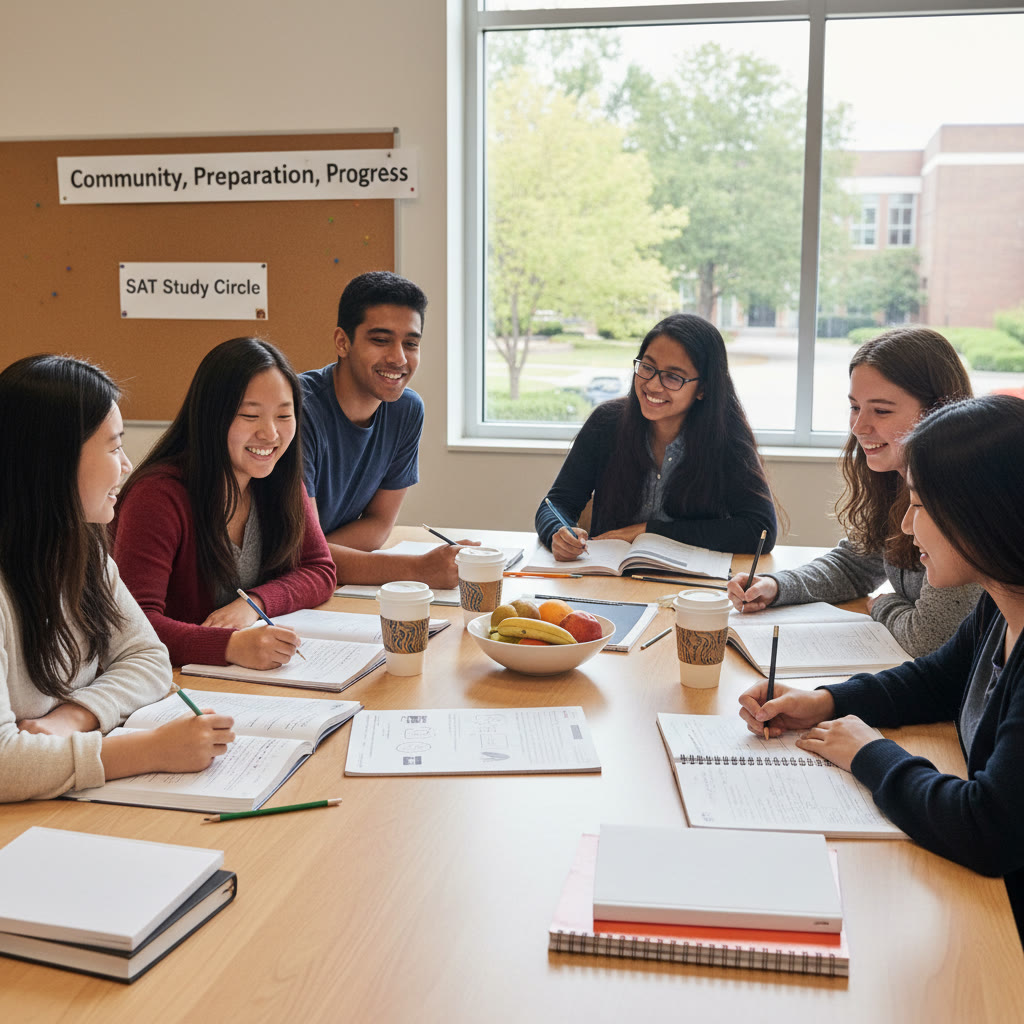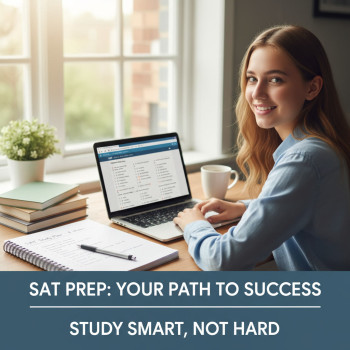Why this conversation matters
Take a moment and picture two students: Maya, who catches a city bus to a high school with AP classes and a college counseling office; and Luis, who drives 45 minutes to a small regional school where only one teacher covers both algebra II and SAT prep when time allows. Both dream of a strong SAT score and a future at a college that fits them. But their journeys look different.
This is not a piece about blame. It’s about understanding real, practical differences in opportunity and experience — and the things students, families, and educators can do to narrow the gap. If you’re studying for the SAT, whether in a downtown high-rise or a small town, you deserve strategies that actually work where you live. This guide explains why experiences differ, gives concrete examples, and offers useful, equitable tactics to boost confidence and scores.

Big-picture differences between urban and rural SAT experiences
When we compare urban and rural students, several themes repeat: access to resources, quality and variety of coursework, test-day logistics, exposure to college-going culture, and time available for preparation. Those themes shape preparation long before test day arrives.
- Access to resources: Urban students often have nearby test-prep centers, tutors, and group classes. Rural students may rely more on online materials, school-provided help, or self-study.
- Coursework and extracurricular breadth: Larger schools frequently offer more advanced courses (AP, honors) and specialized clubs that help college readiness. Smaller schools may provide a broader set of responsibilities for each student but fewer specialized classes.
- Logistics: Test center availability, travel time, and even reliable internet can be different. Long commutes to test sites add stress and can reduce practice test availability in real conditions.
- Guidance and mentorship: Urban schools commonly have dedicated counselors; rural counselors often carry heavier caseloads and fewer resources for individualized college planning.
A short, honest example
Maya has an SAT practice group at school on Thursdays and can visit a tutor once a week after school. She practices on a library computer and gets quick feedback. Luis’s school organizes a single volunteer SAT workshop once a semester; otherwise he practices at home on a spotty internet connection and takes practice tests on a Sunday when his family can drive him to town.
Both paths can lead to success. But the support systems and friction points are different — and acknowledging that helps make smarter plans.
How resource differences translate into test-day advantage or disadvantage
Let’s look at concrete ways resources (or the lack of them) affect outcomes. These aren’t absolutes; they are tendencies that show up in counseling conversations and test preparation patterns.
- Practice volume and feedback: Frequent, high-quality practice with targeted feedback tends to produce faster score gains. Urban students may find tutors more easily; rural students may do more independent practice unless local tutoring programs are available.
- Curriculum alignment: If your school’s math track covers algebra and functions thoroughly, you’ll find less catch-up needed for the SAT math section. Rural schools sometimes have fewer advanced math options, which can make SAT math prep feel like learning new material rather than polishing test skills.
- Reading exposure and language support: Regular exposure to diverse texts — science writing, historical essays, argument pieces — sharpens the reading and evidence skills the SAT tests. Urban students may see a wider mix of reading options through libraries, programs, and clubs, while rural students can still develop these skills through targeted practice and deliberate reading choices.
- Test-day logistics and stress: Driving two hours, worrying about traffic or weather, or missing a bus can derail a test day. Urban students might face their own issues — crowded centers or noise — but often have shorter commutes. Small logistical problems add up to higher anxiety and less optimal performance.
Table: How common factors often differ (qualitative comparison)
| Factor | Urban | Rural | What helps |
|---|---|---|---|
| Access to in-person tutors and prep programs | More frequent options, diverse offerings | Fewer local options; reliance on school or online resources | Blended tutoring, mobile workshops, and scheduled group sessions |
| Course variety (AP, honors) | Often wider selection | Smaller set of classes; teachers cover multiple subjects | Summer online classes, dual-enrollment, targeted study plans |
| Travel to test center | Usually shorter, public transit options | May require long drives or overnight stays | Plan early, arrange transport, take a trial commute |
| Internet and tech access | Generally reliable, many study spaces | Variable; some students work with limited bandwidth | Download practice tests, use offline strategies, schedule low-bandwidth sessions |
| School counseling time per student | Smaller counselor-to-student ratios at some schools | Large caseloads limit personalized counseling | Sparser but effective outreach, community partnerships, small-group advising |
Real students, real trade-offs: two mini-stories
Maya — Urban; strengths and strategies
Maya’s school offers an SAT club, and a local tutoring center runs weekly strategy workshops. She benefits from ready access to practice tests in a quiet school lab and gets helpful feedback from a peer study group. But the city also means heavy distractions: jobs, activities, and social options that compete for time.
What works for her: a flexible, short daily practice habit (30–45 minutes), focused weekly full-length practice tests on weekends to simulate test conditions, and small blocks of deep work with a tutor to target weaknesses. Sparkl’s personalized tutoring fits naturally here too — 1-on-1 guidance to fine-tune strategies, tailored study plans that fit her schedule, and AI-driven insights that point to the exact question types she misses most.
Luis — Rural; strengths and strategies
Luis’s school is small but supportive. Teachers know students’ names and push them to take ownership. His main challenge is access: no local tutors, fewer advanced math classes, and a lengthy drive to the nearest test center. The internet is unreliable some evenings, so long online practice sessions aren’t always possible.
What works for him: predictable, offline-friendly routines. He practices with printed practice tests, uses targeted notebooks for math formulas and reading notes, and schedules practice tests at the nearest library with a stable connection. Where Sparkl helps is providing flexible, tailored 1-on-1 sessions that can be scheduled when he has internet, and a study plan adapted to offline work — plus expert tutors who know how to teach concepts when advanced classes weren’t available.
Practical, low-friction strategies for every student
No matter where you live, some approaches consistently improve SAT performance. The secret is choosing the tactics that fit your circumstances and sticking with them.
- Quality over quantity: It’s better to do a short, focused practice set with review than hours of unfocused practice. Ten well-reviewed questions can teach more than a hundred quickly guessed ones.
- Simulate test conditions: Full-length practice tests build stamina and time management. If travel to a quiet place is hard, find a consistent corner at home and treat it like test day: timed sections, no interruptions, and realistic breaks.
- Targeted study plans: Identify the smallest set of habits that produce the largest score gains. That often means fixing a handful of recurring errors rather than trying to re-learn every topic.
- Use a combination of resources: If in-person help is scarce, mix printed tests, scheduled online tutoring sessions, and local study groups. For students with reliable internet, occasional expert-led sessions (including 1-on-1 tutoring) can accelerate progress.
- Practice logistics: Do a practice commute to the test center, know where to park, bring extra batteries, and set alarms. Reducing day-of friction reduces anxiety and keeps you focused on the test.
Tailored advice: what to do if you’re urban
If you live in a city, you likely have choices — sometimes too many. Here are ways to make those choices work for you rather than pulling you in dozens of directions.
- Pick a predictable routine that fits your schedule: short daily practice sessions paired with one weekly full-length test.
- Quality tutors beat quantity: a few targeted sessions with a skilled tutor or mentor can be more useful than many generic classes.
- Guard your time: city life is busy. Put social activities on a calendar and protect focused study blocks.
- Use local opportunities: libraries, after-school programs, and school labs are great for quiet practice.
Tailored advice: what to do if you’re rural
Rural students can face logistical and access challenges, but they also have advantages: tighter communities, fewer distractions at times, and greater scope for leadership and initiative.
- Create offline study kits: printed practice tests, a notebook for error logs, and flashcards for quick daily review.
- Schedule remote tutoring sessions during reliable internet windows and record them for review when offline.
- Find or form small study cohorts — even two or three committed peers who meet regularly can create accountability and shared knowledge.
- Plan logistics early: reserve travel time to the test center, understand local test dates, and arrange transportation in advance.
How mentoring and personalized tutoring help — a practical view
Across contexts, personalized tutoring addresses two big things: targeted instruction and accountability. A tutor who zeroes in on a student’s recurring errors and provides realistic practice schedules shortens the path from practice to improvement.
For urban students, tutors can refine strategy and provide high-level content boosts. For rural students, tutoring can supply both content and structured practice that might not exist locally. Sparkl’s personalized tutoring model — 1-on-1 guidance, tailored study plans, expert tutors, and AI-driven insights — can fit into either environment. The key is matching schedule and format to each student’s logistics and learning style.
Small but powerful habits tutors emphasize
- Error log maintenance: write down every missed question type and review weekly.
- Active review: explain answers aloud, teach a friend, or write a paragraph on why the correct answer works.
- Timing practice: practice sections under timed conditions and then analyze pacing errors.
- Targeted concept drills: three to five high-impact drills per week for weak areas.
How communities and schools can level the field
Community action matters. Schools, libraries, and local organizations can create surprisingly effective, low-cost supports:
- Weekend group practice sessions at school libraries.
- Transportation cooperatives for test-day travel.
- Volunteer mentorship programs connecting alumni with current students.
- Hybrid workshops combining local instructors with remote expert tutors.
These programs don’t require big budgets; they need coordination, commitment, and the right incentives. When they work, they turn isolated students into supported learners.
Action plan: an 8-week preparation framework that fits different realities
Below is a flexible framework you can adapt to city life or country life. Weeks are modular — do not be afraid to repeat a week focusing on a stubborn topic.
- Weeks 1–2 (diagnose and plan): Take a full-length practice test under realistic conditions. Create an error log. Identify 2–3 recurring weaknesses.
- Weeks 3–4 (target and train): Drill the weak areas with short daily practice and one tutor session per week if possible. Add vocabulary and reading practice in 15-minute blocks each day.
- Weeks 5–6 (simulate and refine): Take another full-length practice test, compare results, and refine pacing strategies. Focus on timing and endurance.
- Weeks 7–8 (polish and troubleshoot): Final targeted drills, strategy review, and two full-length tests spaced one week apart. Plan logistics for test day and reduce study volume in the final two days to rest and review notes.
Common pitfalls and how to avoid them
- Pitfall: Random practice without review. Fix: Always spend as much time reviewing answers as you did answering them.
- Pitfall: Overreliance on group classes without personal feedback. Fix: Add at least one individualized session (teacher, tutor, or mentor) every 1–2 weeks.
- Pitfall: Ignoring logistics until the last minute. Fix: Book travel and understand test center rules three weeks in advance.
- Pitfall: Burning out. Fix: Short, high-quality sessions and scheduled rest days keep productivity up and fatigue down.
Final thoughts — progress is not uniform, but it is achievable
Urban and rural students approach the SAT with different landscapes of opportunity and friction. Understanding those landscapes helps create study plans that actually fit people’s lives. The good news is that many of the most effective interventions are low-cost and adaptable: focused practice, smart logistical planning, error logs, consistent routines, and personalized instruction when possible.
Whether you’re in a city with many choices or a small town where resources are scarce, you can build momentum. Use what’s available in your community, seek targeted advice, and experiment with routines until you find what sticks. Personalized tutoring — like the 1-on-1 guidance, tailored study plans, expert tutors, and AI-driven insights offered by Sparkl — can be a catalyst, helping you translate practice into measurable score improvements while fitting naturally into your schedule.
Above all, remember this: a test measures certain skills at one point in time, but your growth is cumulative. The habits you build preparing for the SAT — curiosity, persistence, and calm on test day — will serve you far beyond a single score.
















No Comments
Leave a comment Cancel